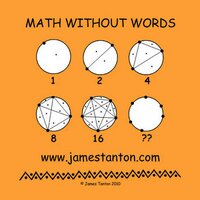
James Tanton
@jamestanton
An Aussie fellow promoting uplifting joyful genuine math thinking and doing for students & teachers alike. Thrilled: globalmathproject.org reaching millions!
ID: 100076513
http://www.gdaymath.com 28-12-2009 23:28:57
20,20K Tweet
33,33K Followers
1,1K Following







































